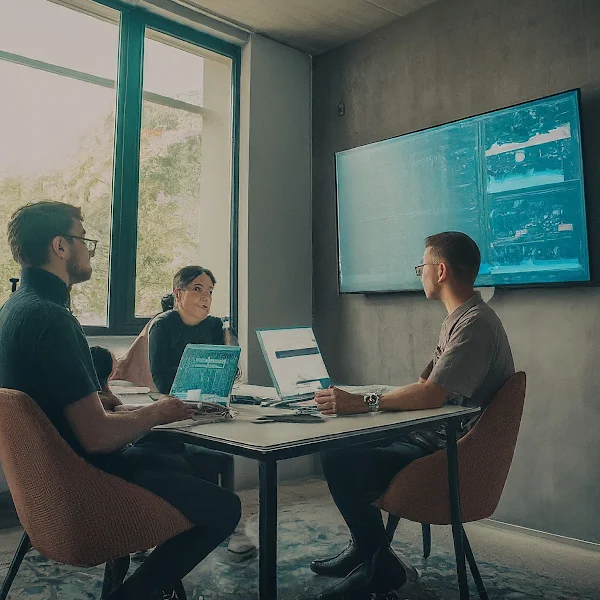Tech-Powered Learning Revolution: 5 Ways Technology is Transforming Education in 2024
Farewell Textbooks, Hello Tech Classrooms: Education Reimagined
Remember the days of bulky textbooks, rote memorization, and one-size-fits-all lectures? 2024 paints a vastly different picture of education, where technology serves as a powerful catalyst for personalized learning, interactive experiences, and global collaboration. From immersive virtual reality (VR) field trips to AI-powered tutors, technology is weaving itself into the fabric of education, creating a vibrant tapestry of possibilities. Let's explore five key ways technology is transforming the learning landscape in 2024:
1. Beyond Walls and Borders: Virtual Reality Opens Doors to New Worlds
Imagine students exploring the Great Wall of China, dissecting a virtual heart, or participating in a Shakespearean play, all without leaving their classrooms. VR makes such immersive experiences a reality, transporting students to distant lands, historical periods, and scientific landscapes. This technology sparks curiosity, deepens understanding, and fosters engagement like never before.
- Case Study: The Smithsonian Institution uses VR to bring its exhibits to life for students around the world, allowing them to explore historical artifacts and environments in an interactive way. (Link to Smithsonian VR experiences: Invalid URL)
2. Personalized Learning Pathways: AI Tutors Pave the Way
Gone are the days of one-size-fits-all learning. AI-powered tutors are changing the game by creating personalized learning pathways for each student. These intelligent systems analyze individual strengths, weaknesses, and learning styles, tailoring lessons, providing feedback, and adjusting pace in real-time. This empowers students to learn at their own speed, master concepts effectively, and gain confidence in their abilities.
- Example: Duolingo, a popular language learning app, uses AI to personalize lessons based on individual progress and learning styles, making language learning more engaging and efficient. (Link to Duolingo website: Duolingo)
3. Collaborative Classrooms: Gamification Fosters Engagement
Learning doesn't have to be a solitary act. Gamification platforms are injecting healthy doses of competition and teamwork into classrooms. With points, badges, and leaderboards, students collaborate on projects, solve problems, and learn from each other in a fun and engaging way. This fosters critical thinking, communication skills, and a sense of community within the learning environment.
- Example: Minecraft Education Edition allows students to build virtual worlds, explore scientific concepts, and collaborate on projects, developing valuable skills in a gamified environment. (Link to Minecraft Education Edition website: Minecraft Education Edition)
4. Breaking Language Barriers: Real-Time Translation Bridges the Gap
Imagine a world where language is no longer a barrier to learning. Real-time translation tools are making this dream a reality, seamlessly translating lectures, textbooks, and online resources into students' native languages. This opens doors to global collaboration, diverse perspectives, and a deeper understanding of different cultures.
- Example: Google Translate, available on many platforms, provides real-time translation for text, speech, and images, enabling communication and understanding across languages. (Link to Google Translate website: Google Translate)
5. Empowering Educators: Technology as a Teaching Assistant
Teachers are not being replaced by technology; they are being empowered by it. Educational technology assists teachers by automating tasks, providing data-driven insights, and creating engaging learning experiences. This frees up teachers' time to focus on what they do best: facilitating discussions, providing personalized support, and nurturing students' love for learning.
- Example: Kahoot!, an interactive quiz platform, allows teachers to create engaging quizzes and games, assess student understanding, and gather valuable feedback in real-time. (Link to Kahoot! website: Kahoot!)
The Future of Learning: A Collaborative Effort
This tech-powered learning revolution is still in its early stages, but the possibilities are endless. However, it's crucial to remember that technology is a tool, not a replacement for human interaction and quality teaching. The future of education lies in a collaborative effort, where technology empowers educators, engages students, and fosters a love for lifelong learning.
Join the Conversation:
- What are your thoughts on the role of technology in education?
- What excites you the most about the tech-powered learning revolution?
- What challenges do you foresee, and how can we overcome them?
Share your thoughts and insights in the comments below! Let's work together to create a future where technology ignites a passion for learning.











Comments
Post a Comment